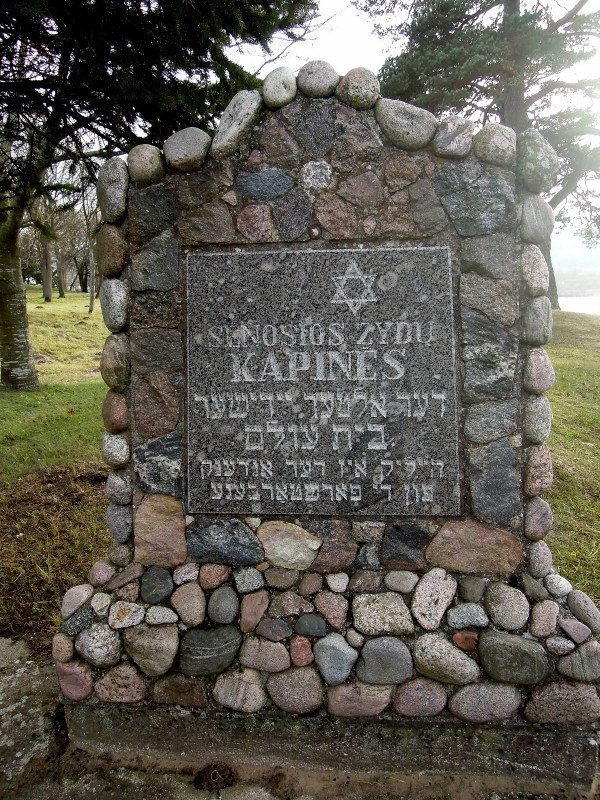Alternate names: Veliuona [Lith], Velon [Yid], Veliona [Rus], Wielona [Pol], Veliouna, Wileny, Velivana, Veliuonos, Vilan, Vileny, Vilon, Russian: Велиона. ווילאָן-Yiddish. 55°05' N, 23°17' E, 28 miles WNW of Kaunas (Kovno), 20 miles E of Jurbarkas. 1900 Jewish population: about 300. Yizkor: Lite (vol. 1) (New York, 1951). 100 Jewish families lived in Veliuona before WWI. During the war, the Tsarist government deported the local Jews to Russia. After the war, some returned. In 1921, 258 Jews lived in Veliuona and about 400 of them before WWII, most engaged in small trade, crafts, farming, and shipping cargo on the Nemunas River. At the end of 19th century, yeshivot were established in addition to the two synagogues and a Yiddish school. [March 2009]
MASS GRAVES: German troops occupied Veliuona Rural District on the first day of WWII and set up a provisional committee, police station and squad of "partisans" (white-bands) in the Veliuona Police station that began arresting 50-50 communists, Red Army soldiers, and a few Jews. The majority were interrogated, some released and others convoyed by white-bands to Kaunas and handed over to the Security Police (15-20 persons). In early July 1941, the white-bands grew to 60 persons. By mid-September, the squad was dispersed and its Commander J. Milius left Veliuona because the persecution of Veliuona Jews started in July 1941 Jewish houses of the rural district were marked with "Jude". Jews were banned from walking on the pavement or being on the street at specified times. They were forced to perform public works like digging trenches and cleaning streets. Later lists of Jewish property and seizure came. The first Jews of Veliuona were killed at the end of July in the Jewish cemetery by a "partisan" squad. Three Soviet activist Jews were shot; and a fourth from Jurbarkas escaped. The second execution of Veliuona Jews occurred in the pine-tree grove at the Gystus River around August 20 when 15 armed men came by lorry from Seredžius with list of selected Jews made by the Security Police. 40 to 50 middle-aged Jewish men were arrested and brought to the synagogue. The next day, they were killed by local white-bands and activists who came from Seredžius in the pine grove at the Gystus River (1.5 km from Veliuona). In mid-August, gathering and arrests of Jews began in all of Kaunas guberniya, preparation for mass extermination of the Jews. A ghetto was set up in Vilkija with white-bands compiling lists of the Jews to be transferred. Local white-bands locked up the 237 Jews of Veliuona Rural District in the synagogue and then transported to Vilkija Ghetto in several phases. Sixty Jewish women and children were transported to Vilkija at the beginning of August, about 1
00 at the end of August, and 150 to 200 at the beginning of September, reportedly the 74 Jewish families with 237 or 271 persons on August 9. They were killed with the Jews in Vilkija Ghetto in August and September after paying 16,000 rubles on August 9 or 22. The seizure and transfer of Jewish property took place parallel with the arrests and shooting. Valuables were listed and Jewish houses sealed. A commissions evaluated and sold the Jewish property at auction realizing 200,000 rubles. [March 2009]
Forest at the Gystus river, 2 km from Veliuona toward Jurbarkas: The remains were brought to the massacre site in the forest of Pakarkle (see Vilkija). Source: US Commission for the Preservation of America's Heritage Abroad
Photos courtesy of This email address is being protected from spambots. You need JavaScript enabled to view it. [January 2016]


